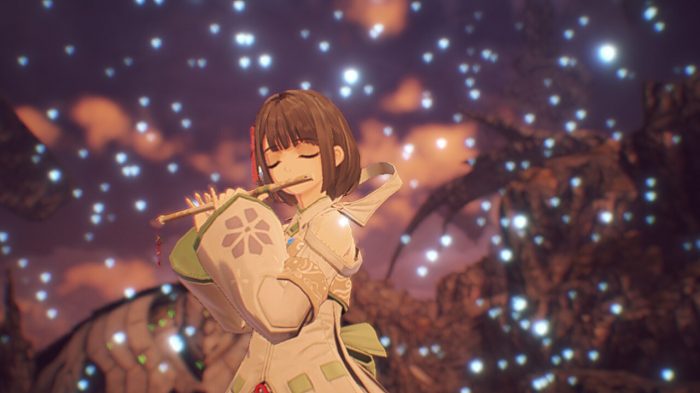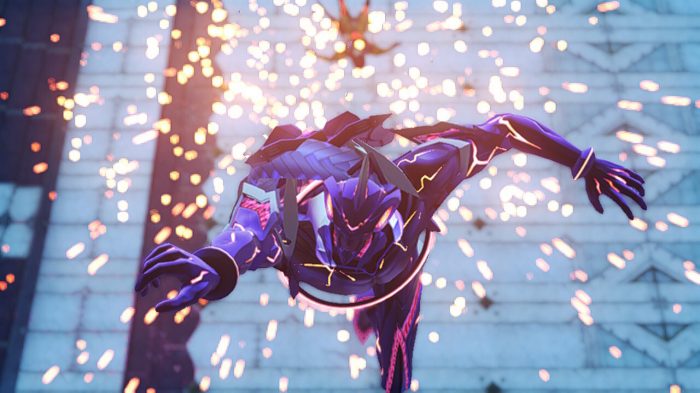There is a rich, varied, and motivational history behind the Xenoblade Chronicles series. From its inception in 2006 through to its truly epic conclusion in 2022, Xenoblade has always been a series developed with an unwavering commitment to its core vision. Tetsuya Takahashi and the team at Monolith Soft have been on quite the journey since the release of the original Xenoblade Chronicles, and what we have today is undoubtedly the result of a team who has honed their craft over and again. There are many out there far better placed to provide commentary on the trials and tribulations of XC’s development, however, it is abundantly clear, even to a player relatively new to the franchise, that there have been a lot of lessons learned. The result? One of the greatest games I have ever played, and the best one on the Nintendo Switch right now.
Statements don’t get much bolder than that, especially not at Switch Player HQ, yet I can whole-heartedly say that Xenoblade Chronicles 3 is the complete package. Somehow, Monolith Soft has managed to tell poignant and personal stories all whilst ensuring player progression, combat, world-building, and sound design are still pride of place. Any one of these elements could be heralded for the monumental impact they have on player experience; instead, it’s the way these elements meld together that ensures XC3 lives long in the memory. That being said, the story is where I’ll begin lavishing praise because it is, without question, the most engaging and heart-wrenching video game story I’ve experienced in a very long time.

I cried. 52 hours into my first playthrough, and I cried. There are three important points to unpick there. The first: I cried. The second, I was still playing after 52 hours. And the third, that was my first playthrough. For the best part of 100 hours, XC3 has gripped and enthralled me with its tales of despair and destruction, camaraderie and courtship, and the power of hope. I did not want it to end, and that’s a testament to the quality of the writing and the way in which it is told. For fear of spoiling absolutely any part of it, I’ll refrain from delving into any of the story beats. What must be said though, is that for all the fantasy and fictitiousness, there are so many relatable moments that it’s hard not to feel emotional about it. There’s a lot to be learned and relearned about life in the real world through the messaging within.
Now, a comfortable 70-hour plus campaign can’t be enjoyed purely on story alone. There is a core gameplay loop that Monolith has meticulously crafted, building upon the games that have come before it to produce a multi-faceted experience that is an absolute joy to play. You are introduced to the sprawling lands of Aionios and given the opportunity to explore it at any time. In doing so, you’ll uncover that somehow, just somehow, there is even more here than meets the eye. There were parts of the map I was still uncovering at the 90-hour mark. Even more miraculous though is the way in which the development team has ensured that it isn’t overwhelming. There are ever-evolving mechanics, ideas, and traversal techniques that are drip-fed naturally so that the game continues to feel fresh despite its long playtime. No more evident is this than in the combat.

The way the combat starts compared to the monumental way in which it ends is a sight to behold. It appears complex, yet there’s a simplicity to it that encourages experimentation even when fighting multiple enemies at the same time. The use of an auto attack makes this possible, as does the very intuitive control scheme that assigns an attack to each of the four directional buttons and the four A/B/X/Y buttons. It’s fast, fluid, and builds throughout each encounter so that you can unleash special attacks when your meters are full. Again, not available from the start, but when it is introduced, it makes sense from a plot perspective and a combat one too. Still, images of combat won’t do the slick and stylish action any justice; if anything it may deter would-be players as it looks rather bizarre. However, a few moments with it would dispel any myths that this isn’t an accessible game for newcomers.
When new mechanics are introduced, be it in-game or in-menu, Monolith has been careful not to overburden or confuse players. There’s often a short on-screen text or image, and then a tutorial in which you are only able to complete the specified actions so that you learn how to do it. Many games could learn from this approach, and it’s yet another example of the team honing their vision for an engaging and intuitive game.
And what a vision it is. The size, scope, and scale of the world at your fingertips is nothing short of wizardry. There are games that come along once in a decade — think Breath of the Wild or Skyrim — that produce a living and breathing world of this magnitude. There’ll be naysayers who say XC3 lacks the same level of detail as those two titles as there are far fewer towns and villages to delve into, however that’s part of XC3’s charm and why it’s so impressive. Traversing across such wide and expansive vistas with only monsters and music to accompany you has a beauty to it that is hard to describe. I’ve explored every inch of the different locations in XC3 — this is no mean feat— and I did so purely because I wanted to uncover its secrets. More so than that though; I just wanted to spend as much time in the world as I possibly could.

What sets XC3 apart from its other open-world contemporaries is its verticality. Many games excel at building worlds that are wide and long, yet few tackle the challenges associated with creating lands high above the ground – there’s even less when you consider those without skyscrapers. It’s mind-boggling to come across a new location or be taken to a new area and to then look out on the rest of Aionios. The team deserves serious praise for the realised vision of this world, and the interconnectivity between the different locales and the story itself.
Just over two years ago, Monolith re-released the original Xenoblade Chronicles with the Definitive Edition moniker. There was a need to bring it to the Nintendo Switch after the success of the second game, and it was important to give it a fresh lick of paint. It is heralded for the improvements that have been made, particularly as it now displays at 1080p in docked mode. It also boasts 720p in handheld, however, this hasn’t translated as well as it sounds, and it is a little disappointing to play in this way. The same can be said for Xenoblade Chronicles 2, and it has proven to be a misstep in an otherwise stellar offering of both games. With vastly improved visuals advertised for XC3, the real question was not how good it would look docked but would it hold up on a swanky new OLED screen.
In short, it’s rather beautiful. It pops in docked mode with the influence of the colour palette and the attention to detail not lost on the big screen. It showcases Monolith’s understanding of the Nintendo Switch hardware very well. Not only that, but it’s just as impressive in handheld. Traditionally, I’ve been reluctant to play Xenoblade handheld as it’s always felt like a subpar experience. If anything, I’ve been encouraged to play more of the game in handheld mode, and it has subsequently highlighted just how well-suited it is to it. The parity between docked and handheld is now much closer, and it has become a must-have game for either playing preference. That’s not to say it’s perfect – there are occasions where it lacks visual fidelity and monster pop-in can be prevalent – however the ability to balance sheer scope with performance isn’t easy.

No review of Xenoblade Chronicles 3 would be complete without reference made to its absurdly good soundtrack. Composed by a very talented team comprising Yasunori Mitsuda, Manami Kiyota, ACE, Kenji Hiramatsu, and Mariam Abounnasr, it completes the most compelling package on a Nintendo Switch cartridge. When the Definitive Edition of XC1 was released, many reminisced about the times they would load up the start screen and enjoy the opening song. In XC3, you can do this at any point in-game, and you won’t be disappointed. It’s a masterclass in how video game music should be done and stands on its own as a very important album for any music lover’s collection.
There aren’t enough words to express just how impressed I am by the work of Takahashi and the team. It’s a game that will live long in my memory, and yet one I hope at some point I will forget about just long enough to play it all through again. Many try and fail to recapture the feeling of experiencing something for the first time; not since Breath of the Wild have I felt this way about a game. It’s special in a way that only some games ever achieve, and I stand by my claim that this is a once-in-a-console-generation experience. I think I’ve had the epiphany that many series veterans had when they played the original Xenoblade Chronicles for the first time, and I’m just glad I was able to have that moment before the trilogy came to an end.
Xenoblade Chronicles 3 £49.99
Summary
Xenoblade Chronicles 3 is as close to gaming perfection as you’ll get on the Nintendo Switch. If the story doesn’t grip you, the combat, landscapes, mechanics, or soundtrack surely will. Monolith Soft, take a bow!

